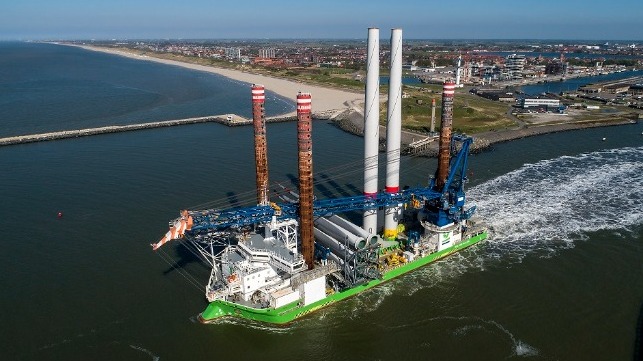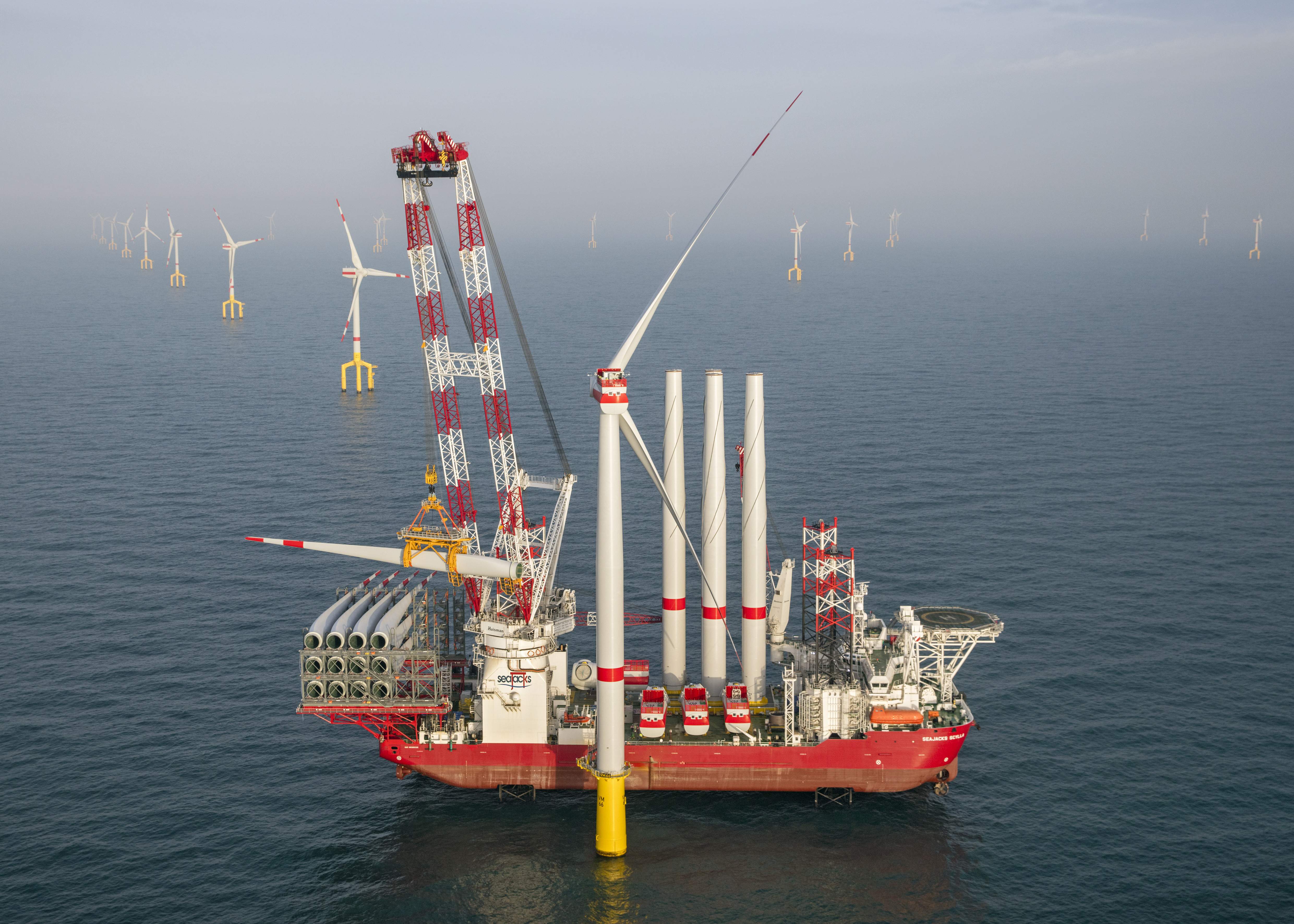Offshore Wind Players Join Forces on Installation Jack-Ups

With increasing activity in the global offshore wind sector, dozens of industry players have joined in a Joint Industry Program (JIP) on wind turbine installation (WTI) jack-ups. Under the administration of the Society of Naval Architects and Marine Engineers (SNAME), a group of nearly 30 organizations are now participating in a two-year JIP named “Jack-up Renewable Energy Guidelines,” or J-REG. The program is especially timely now with the growing number and size of wind turbines planned for installation worldwide, and with jack-ups being the key building block to the successful installation and maintenance of those turbines.
The oil and gas (O&G) industry operates an extensive fleet of jack-up mobile offshore units (MOUs) with technologies and skills developed since the first such structures emerged in the 1950s. Many features of these units have been successfully transferred to the WTI jack-ups used in the renewable energy space. The goal is now to drastically scale up renewable energies like offshore wind requiring aspects unique to WTI jack-ups to be addressed with this dedicated JIP effort. SNAME is in a privileged position to facilitate this process due to its long history supporting jack-up technology. Using this connection, this program aims to deliver a SNAME Technical and Research (T&R) Bulletin with guidelines that fill the “gaps.” The broad objective is also to reduce non-productive time and to reduce risk in WTI jack-up operations.
JIP Formation
The compelling case for new WTI jack-up guidelines is highlighted by the differences in the functional requirements when compared to those for O&G. WTI jack-up operations are typically conducted over short periods of time at a site – about one to two days per turbine location, compared to 60-90 days for O&G jack-ups. These jack-ups also perform heavy lifts during turbine installation, while O&G jack-ups conduct different operations associated with drilling. The associated high frequency of rig moves and the heavy lift operations each significantly change the design and operational parameters of the jack-up. These and other requirements have caused the WTI jack-up to evolve into a four-legged design that is self-propelled.
To address the unique aspects, the J-REG JIP has engaged participants from many sectors, including from offshore wind energy developers, owners/contractors, designers, classification societies, marine warranty surveyors, turbine manufacturers, universities, consultants, and regulatory bodies. Funds have been contributed by the major players in the JIP and are being used for priority studies, while other participants are contributing in-kind. The planned collaboration is expected to be useful in aligning current practices and documenting them as industry guidelines.
J-REG was undertaken by the SNAME Offshore Committee Panel OC-10, Ocean Renewable Energy, in the subcommittee for Wind Turbine Installation (WTI) Jack-Ups. The activities were initiated by GustoMSC and have been coordinated by Brekke Offshore Consulting starting with Phase I in the summer of 2019. Phase I activities delivered a proposal for Phase II to develop worldwide guidelines for site assessment of WTI jack-ups. By April 22, 2021, the required number of industry participants had signed the Phase II contract. The first meeting of J-REG JIP Phase II was held on June 2, 2021.

Courtesy Huisman
Past Developments
The past developments in ISO standards for O&G jack-up site assessments play a substantial role in this JIP. For O&G jack-ups, also referred to as MODU jack-ups, the SNAME Offshore Committee Panel OC-7 delivered the SNAME Technical and Research (T&R) Bulletin 5-5 on Site-Specific Assessment of Jack-Up Rigs for the elevated condition. This effort began with a joint-industry program in the mid-1990s and SNAME T&R Bulletin 5-5 has since been used extensively in the offshore oil and gas industry.
In the mid-2000s, work began by the same industry group to develop ISO 19905-1, which now supersedes the archived SNAME 5-5. This ISO standard was initiated by ISO Technical Committee 67 Sub Committee 7, Work Group 7 (ISO/TC 67/SC 7/WG 7) to enlist many of the same industry professionals to develop an ISO standard for elevated site assessment using SNAME T&R Bulletin 5-5 as the basis.
In recent years, the same ISO group expanded its scope to site-specific assessment for installation and removal of jack-ups, and generated an associated draft version, ISO 19905-4. This is another key reference in the development of the SNAME bulletin deliverable for this program.
JIP Objectives and Deliverables
The objectives of the JIP are as follows:
- Provide guidelines for the site-specific assessment of jack-ups working in the renewable energy industry focusing on the differences between WTI jack-ups and O&G jack-ups. This covers the elevated (survival/operating) condition and the installation/removal condition.
- Engage industry: developers, owners/contractors, designers, classification societies, warranty surveyors, turbine manufacturers, universities, consultants, and regulatory bodies.
- Identify, keep record of, and address the gaps in guidance between site-specific assessments for elevated conditions and installation and removal of WTI and O&G jack-ups.
- Reduce non-productive time and risk of wind turbine installation (WTI) jack-up operation by establishing best practice methods and procedures that promote safety and practicality.
- Safely increase the potential of wind turbine installation jack-ups by establishing target reliabilities for WTI jack-ups specific operations and introducing the corresponding safety factors.
The JIP deliverable will be a SNAME bulletin (informative) documenting guidelines generated from gap assessments of priority topics. This bulletin will refer to existing industry jack-up site assessment standard ISO 19905-1 (elevated condition) and upcoming ISO 19905-4 (installation and removal). The purpose of the bulletin would not be to repeat these standards but to supplement them by filling in gaps that exist between jack-up operations for O&G and WTI. The guidelines are expected to apply across various regions (US, Europe, Asia) with guidance that is common to these regions whenever possible.
This post is sponsored by SNAME.
The opinions expressed herein are the author's and not necessarily those of The Maritime Executive.
